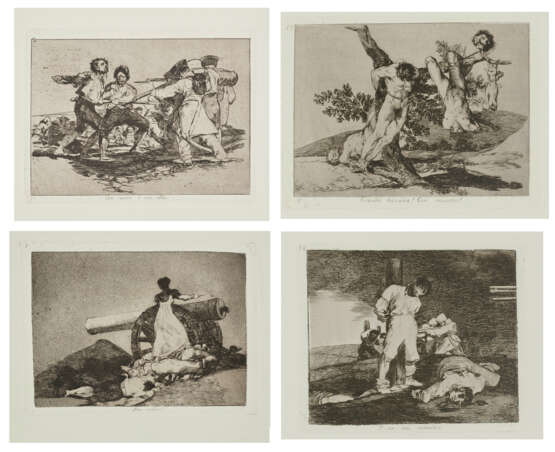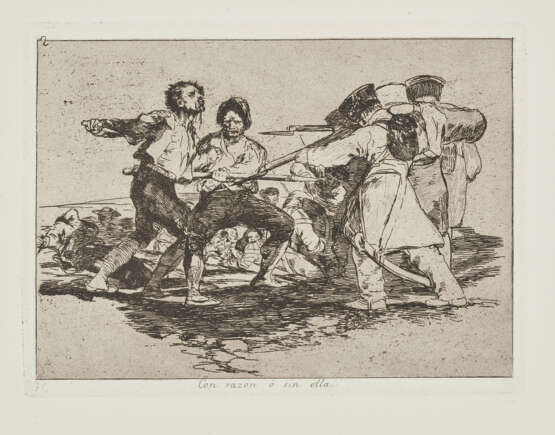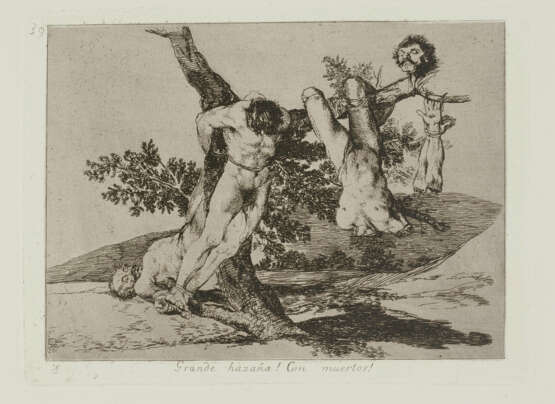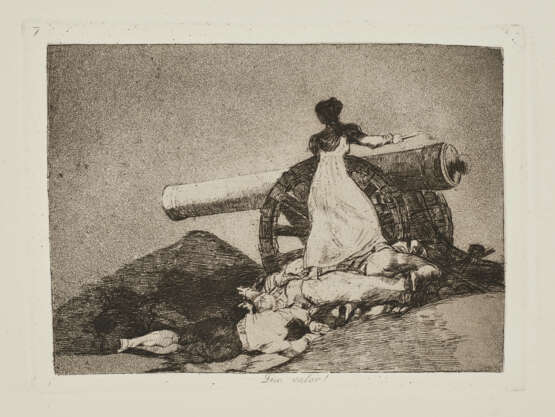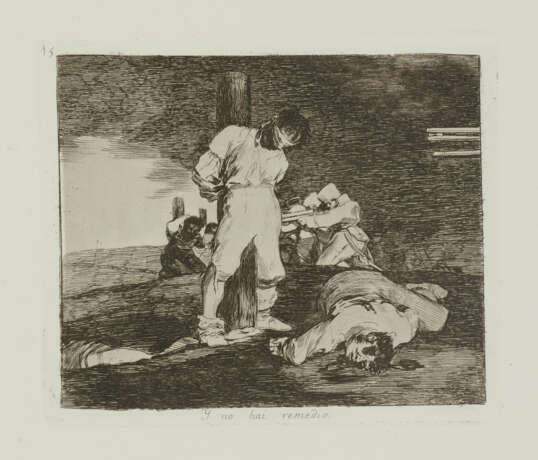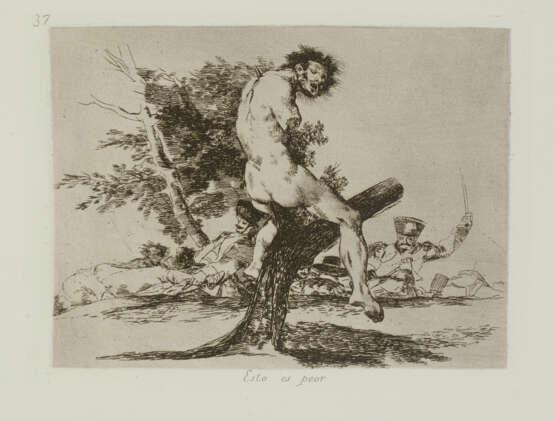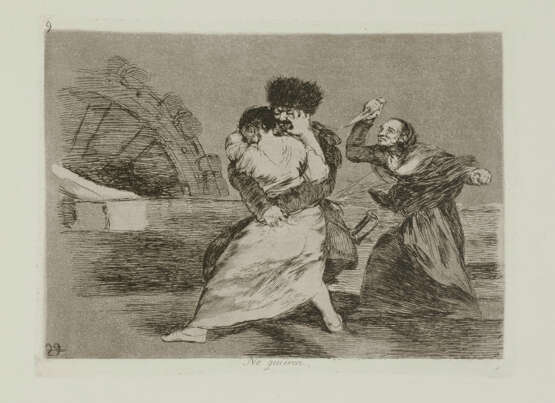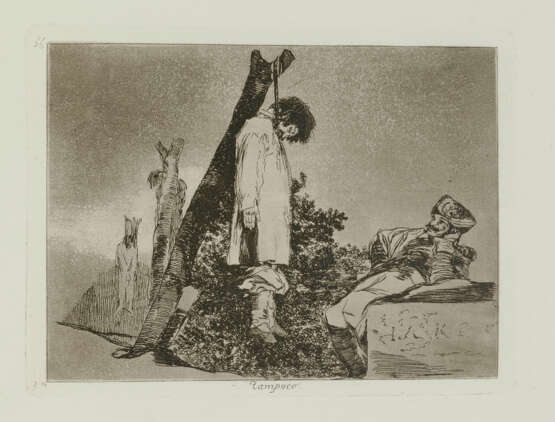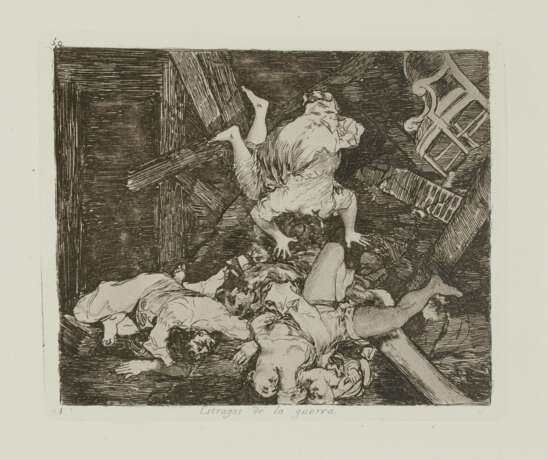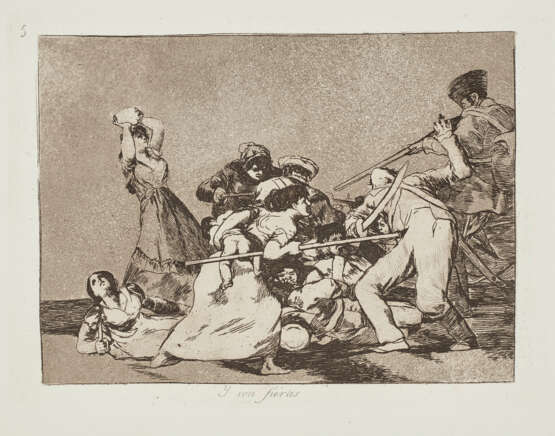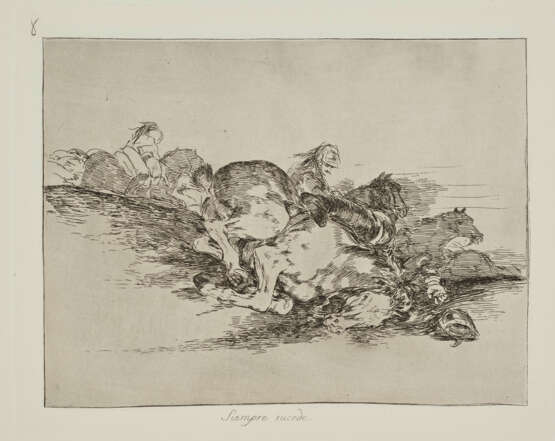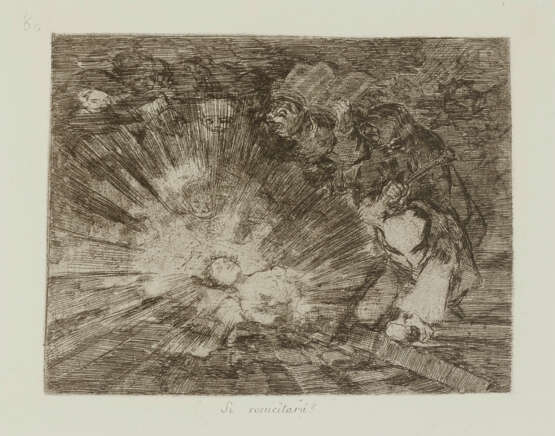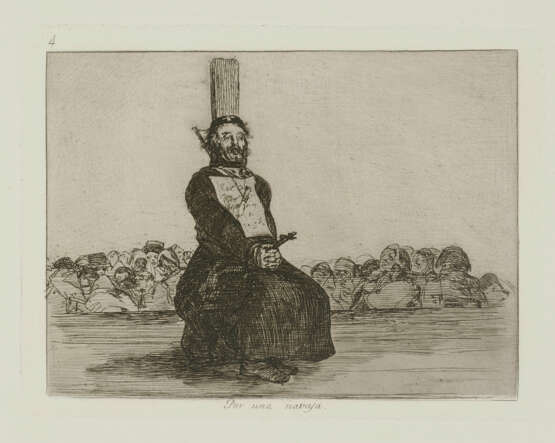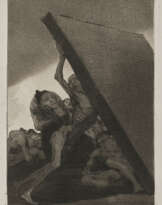ID 887628
Lot 130 | FRANCISCO DE GOYA Y LUCIENTES (1746-1828)
Estimate value
$ 80 000 – 120 000
Los Desastres de la Guerra
the complete set of eighty etchings with burnished aquatint, drypoint and engraving, 1810-1820, on wove paper, some with watermark fragments J.G.O. or Palmette, with title-page and biographical essay, good to very good impressions printed in black or dark sepia from the First Edition of five hundred copies (Harris 1b), after the corrections to the titles, published by the Real Academia de Nobles Artes de San Fernando, Madrid, 1863, bound in blue cloth-covered boards, the sheet edges tinted in orange, the binding worn, the front cover detached, the prints in good condition
Plate 175 x 217 mm. (and similar)
Sheet 236 x 337 mm. (and similar)
Album 245 x 350 mm. (overall)
Provenance
Joseph Wilhelm Drexel (1833–1888), Philadelphia and New York (his bookplate on the inside front cover), banker, philanthropist, bibliophile, and early trustee of the Metropolitan Museum of Art.
Lucy Wharton (1841–1912), Philadelphia and New York; by marriage from the above (her bookplate on the inside front cover).
Josephine Wharton Drexel (1878-1966), New York; by descent from the above (her bookplate on the inside front cover).
Then by family descent to the present owners.
Literature
Delteil 120-199; Harris 121-200
| Artist: | Francisco de Goya (1746 - 1828) |
|---|---|
| Applied technique: | Etching |
| Art style: | Old Masters |
| Genre: | Allegory, Genre art |
| Place of origin: | Spain |
| Artist: | Francisco de Goya (1746 - 1828) |
|---|---|
| Applied technique: | Etching |
| Art style: | Old Masters |
| Genre: | Allegory, Genre art |
| Place of origin: | Spain |
| Address of auction |
CHRISTIE'S 20 Rockefeller Plaza 10020 New York USA | ||||||||||||||
|---|---|---|---|---|---|---|---|---|---|---|---|---|---|---|---|
| Preview |
| ||||||||||||||
| Phone | +1 212 636 2000 | ||||||||||||||
| Fax | +1 212 636 4930 | ||||||||||||||
| Conditions of purchase | Conditions of purchase | ||||||||||||||
| Shipping |
Postal service Courier service pickup by yourself | ||||||||||||||
| Payment methods |
Wire Transfer | ||||||||||||||
| Business hours | Business hours
|
